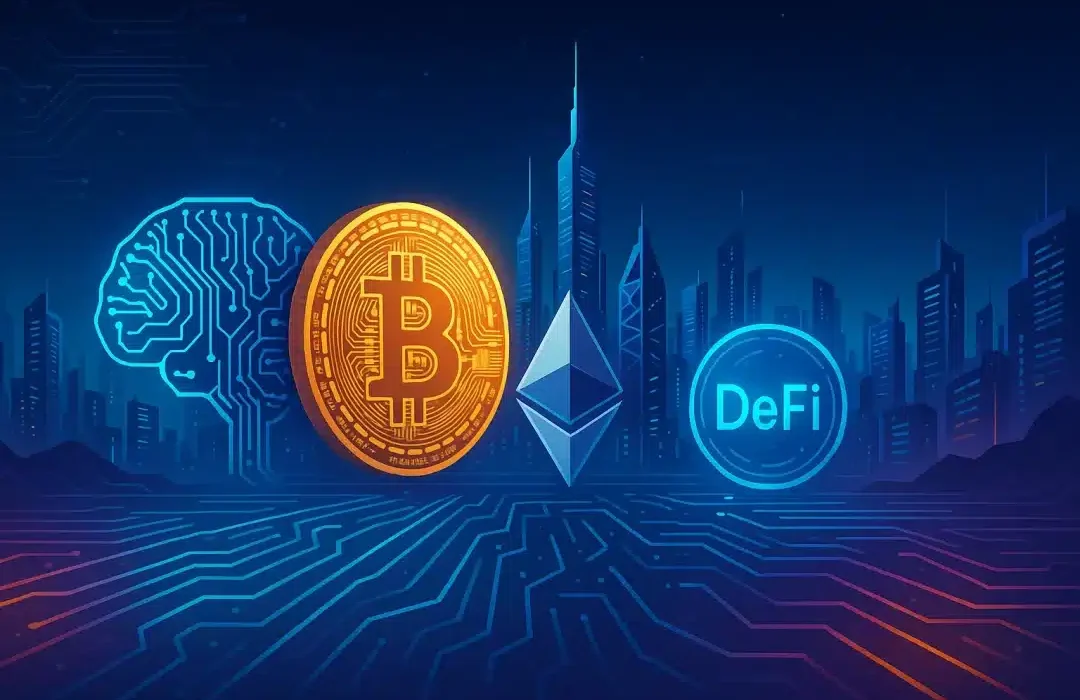Over the course of the past decade, the blockchain and cryptocurrency industries have changed quite a bit. Initially, the digital currency was just an experiment, but now, it has turned into a massive technological disruption that has impacted many industries such as finance, governance, and business processes, and even has a role in digital identity. By the end of 2025, the blockchain sector will be more intricate, more regulated, and more connected to the main systems than ever before.
Here are the major trends shaping blockchain and crypto in 2025 and why they matter.
Institutional Adoption Reaches a New Level
2025 is seeing stronger participation from banks, asset managers, fintech companies, telecom firms, and even government-backed initiatives. Crypto gained a different perspective, not just as a speculative asset but also as a technology that has started to be involved in payment systems, investment portfolios, and enterprise technology.
The implication of this is that:
- To the crypto market, more stability and legitimacy
- To the blockchain professionals, more chances
- To the industry, higher compliance and security expectations
This is the indication of the transition from niche innovation to mainstream acceptance.
Clearer Regulations Around Crypto & Digital Assets
One of the major aspects in 2025 will be the regulatory certainty. Governments worldwide, especially in Asia, Europe, and North America, are defining structured rules for cryptocurrency exchanges, stablecoins, taxation, and consumer protection.
Impact of stronger regulations:
- More safety for users and investors
- Reduced scams and fraud
- Easier for companies to work legally with crypto
- A more predictable environment for blockchain startups
With rules becoming clearer, the industry finally has room to grow responsibly.
Real-World Asset Tokenisation Is Now a Regular Practice
Tokenisation is the process of converting real-world assets such as real estate, gold, artwork, stocks, and bonds into digital tokens that are stored on a blockchain.
There are several reasons why the tokenisation market is booming:
- Settlement and transaction processes have become faster.
- Traditionally illiquid assets now have higher liquidity.
- People can now own fractions of a whole asset.
- Records can now be kept in a transparent and unalterable manner.
One of the results of these factors is that the storage, trading, and investment of wealth are significantly changing.
AI and Blockchain Unite
In 2025, AI and blockchain are starting to be interdependent in many different applications.
Some of the examples are:
- Analytical models for AI regarding data from the blockchain
- Smarter, flexible smart contracts
- Use of AI in fraud detection in crypto networks
- Blockchain in protecting the identity and content of AI-based works
The blending of technologies brings about new possibilities, yet at the same time, the challenges and risks, particularly in areas like data security and governance, are also increasing.
Enhanced Focus on Security and Fraud Prevention
The threats have paralleled the industry’s growth. The crypto hacks, phishing scams, smart-contract exploits, and identity theft are now more advanced than ever. This has resulted in security becoming one of the top concerns of 2025.
Security trends:
- Mandatory code audits for big projects.
- Advanced encryption and zero-knowledge proofs are systematic.
- Multi-layer authentication for wallets and exchanges.
- Heavier user education about scams.
The demand for better security is turning both tech and user habits upside down.
The Rise of Stablecoins and Digital Currencies (CBDCs)
Stablecoins, which are digital currencies linked to the value of a fiat currency, are slowly gaining acceptance as a mode of payment in different kinds of transactions, such as remittances and business transactions. Meanwhile, a number of states have begun to either conduct experiments with or run pilot programs for Central Bank Digital Currencies (CBDCs).
The main factors behind the trend are:
- Faster and cheaper money transfers on a global scale.
- Reduction in transaction fees.
- Stronger integration of crypto and traditional banking.
- The government’s trust in digital currencies.
The mounting of this trend is separating the traditional finance sector from the blockchain technology sector, and vice versa.
Emerging Markets Growth, Especially in Asia
By 2025, the fastest adoption of blockchain technology will occur in India, Southeast Asia, Africa, and Latin America. These regions are utilizing blockchain for payments, identity verification, microloans, gaming, and supply-chain transparency.
Key factors for the robust adoption are:
- A large proportion of the population is young.
- A high level of smartphone penetration
- Limited access to the traditional banking sector
- A growing pool of digital entrepreneurs
This transition is empowering the smaller economies to bypass the old financial systems.
Sustainability and Layer-2 Scaling Solutions
Blockchain networks worldwide are getting more energy efficient and, by using Layer-2 solutions, the infrastructures built on top of the existing blockchains are reducing costs and increasing transaction speed.
This results in the following:
- An environmentally friendly and greener blockchain ecosystem
- Users benefit from fast and cheap transactions.
- Trivial for decentralised apps (dApps) to be developed
- Better user experience and an increase in adoption
The scalability issue is being changed from an aspiration to an achievement.
Conclusion
The trends of the market through blockchain and cryptocurrency in the year 2025 depict a sector that is evolving at a fast pace. To professionals, investors, businesses, and even students, the year 2025 is a suitable period to get familiar with blockchain not merely as a passing trend, but as a skill, an opportunity, and a foundational technology that will dictate the next decade.
Frequently Asked Questions
Cryptocurrencies have the potential to yield significant returns, but at the same time, they are associated with very high risks. With the rollout of clearer regulations in various jurisdictions, things are getting safer but the risks, such as market fluctuations, hacking, and fraud, are still there.
Tokenisation of real-world assets (RWA) means the transformation of tangible or financial assets such as real estate, gold, bonds, or stocks into digital tokens on a blockchain. It is becoming so popular because it enables quicker transactions, fractional ownership, and enhanced liquidity, thus making investment more inclusive.
In 2025, AI and blockchain are combining in various sectors:
Blockchain data is utilized by AI models for making superior predictions
AI is employed to uncover fraud in crypto networks
Smart contracts are getting more intelligent
Blockchain maintains the authenticity of AI-generated content
Disclaimer: The information provided in this article is for educational and informational purposes only. It should not be considered financial, investment, legal, or trading advice. Cryptocurrency markets and blockchain technologies are highly volatile and subject to rapid regulatory, technological, and economic changes.

